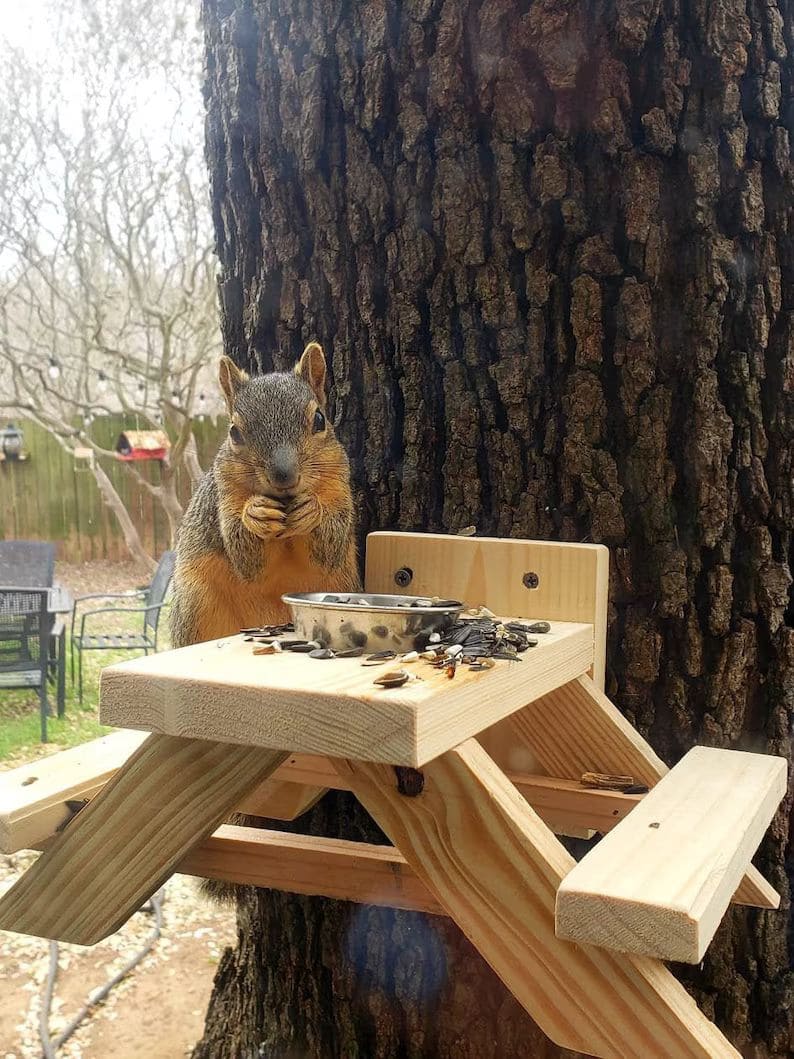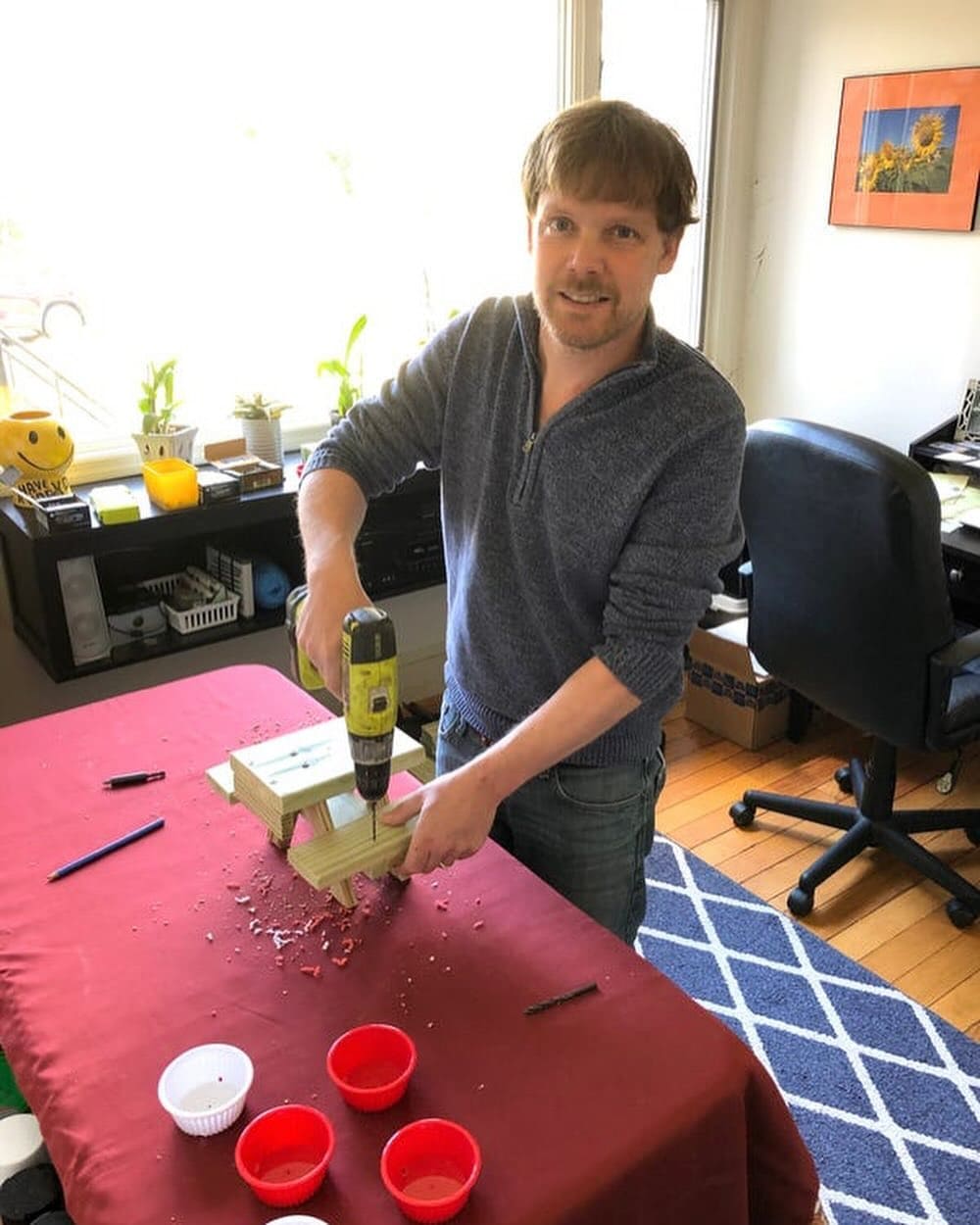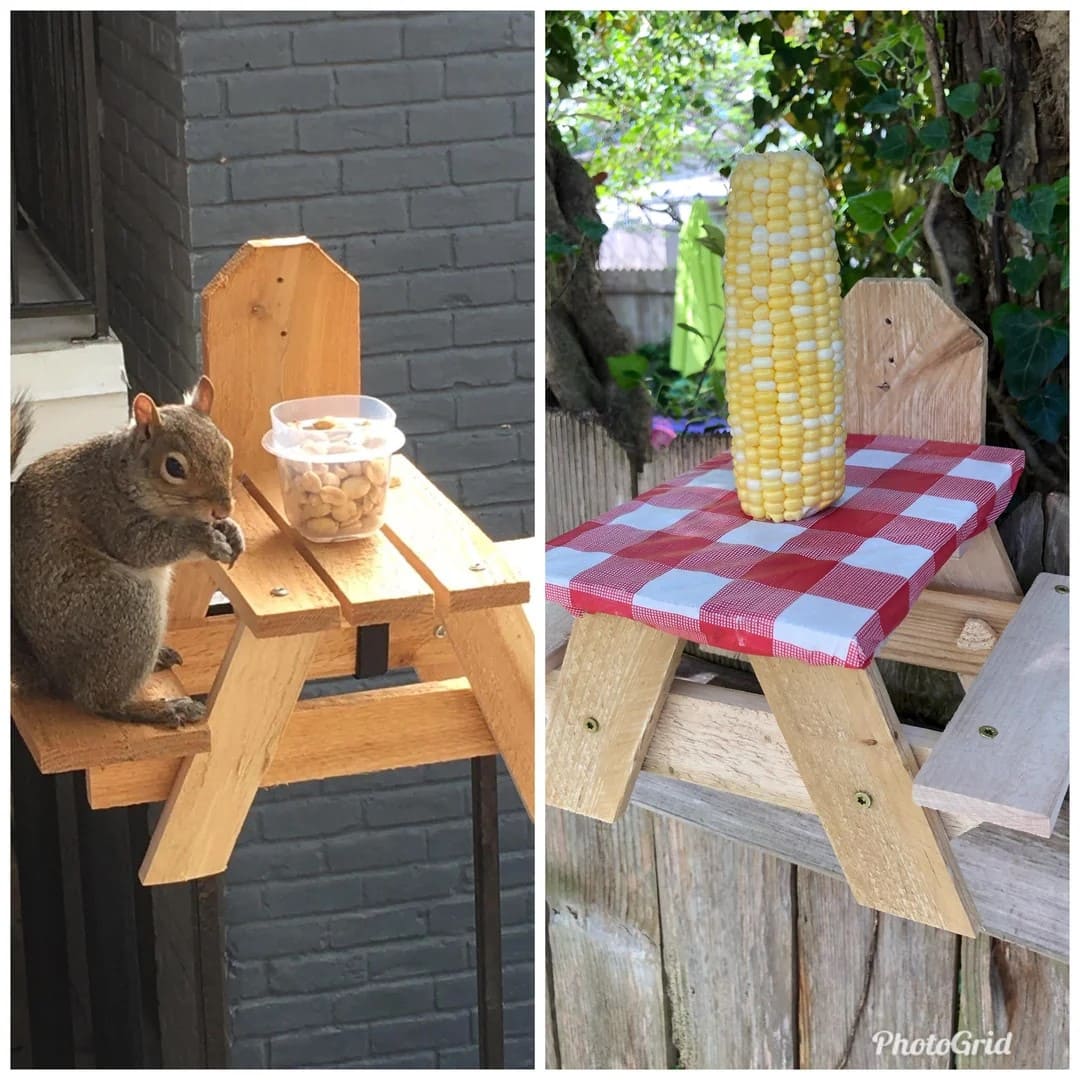It’s great to watch a squirrel munch happily on a snack-sized picnic table you made yourself.
This little project isn’t just adorable, it’s also surprisingly easy, and a great way to bring more life and joy into your backyard.
As someone who’s spent years tending gardens and trying to keep the balance between wild and cultivated, I can honestly say this feeder is one of the simplest ways to feel closer to the natural world.
Why Build a DIY Wild Animal Feeder?

Feeding local wildlife can be a deeply satisfying way to give back to your environment, especially during seasons when food is scarce.
Squirrels, birds, and chipmunks all play roles in seed dispersal, pest control, and ecosystem health. A homemade feeder like this one invites them in gently, while offering you a front-row seat to nature’s cutest drama.
Plus, if you’ve got kids or just need a little distraction from daily stress, there’s nothing quite like watching a squirrel politely nibble at a mini picnic table like it’s lunchtime in the park.
Read more: 18 DIY Bird Feeder Ideas For A Lively Garden
Materials Needed
Lumber Pieces (you should use untreated pine or cedar):
- 1 piece: 7” × 3.5” × 1” (tabletop)
- 2 pieces: 5” × 1.5” × 1” (benches)
- 4 pieces: 5” × 1.5” × 1” (legs, cut at 45° angle for better support)
- 2 pieces: 4” × 1.5” × 1” (bench supports)
- 2 pieces: 3.5” × 1.5” × 1” (leg cross braces)
Other Materials:
- 1 box of 1.5″ exterior wood screws
- Drill and drill bits
- Sandpaper (medium grit)
- Wood glue (optional)
- Outdoor wood stain (optional)
- Bracket or L-screws
- Small plastic or ceramic dish (optional)
Step-by-Step Guide to Build a DIY Wild Animal Feeder
Step 1: Cut Your Wood Pieces
Using a handsaw or miter saw, cut each wood piece to the measurements as I have shown.
For the legs, you should use a 45-degree angle at both ends so they form an “A” shape once attached. Then double-check everything fits snugly before drilling.
Step 2: Assemble the Tabletop and Benches
Start by screwing the two 5″ bench pieces parallel to the 7″ tabletop, leaving a 2″ space between the bench and the tabletop edge.
Next, use two screws per side for stability. If you’re using glue, add a small line before attaching with screws.
Step 3: Add the Legs
Take two of your angled leg pieces and attach them beneath the tabletop in an inverted V shape like a picnic table.
You can do the same on the other side. It helps to mark where the legs will go before you screw them in to make sure everything is even.
Step 4: Attach Cross Braces and Bench Supports
Screw the two shorter 3.5” braces between the legs to prevent wobbling. Then attach the 4” bench support pieces beneath each bench, connecting them back to the legs.

Step 5: Sand It Smooth
Wild animals can get splinters too, so you should give everything a good sanding to remove sharp edges and rough surfaces.
Step 6: Paint or Stain (Optional)
You can add a coat of weather-safe paint or wood stain to protect your feeder and personalize it. Bright colors are fun, but natural tones blend into the environment better and may help animals feel safer.
Step 7: Mount the Feeder
Now you can use screws or sturdy L-brackets to mount the table to a fence, tree post, or railing about 3-4 feet off the ground.
Step 8: Add Food and Watch the Fun Begin
Finally, place a small bowl in the center or scatter some unsalted peanuts, apple slices, corn kernels, or grapes directly on the tabletop.
You can sit back and wait as squirrels and other wild animals usually find it within a day or two!

Tips for a Happy Feeding Station
Keeping your little feeder clean is essential. Wipe down the surface every few days to prevent mold from growing or ants from taking over. Squirrels are pretty tidy, but leftover fruit can go bad quickly, especially in the sun.
You don’t need to fill the feeder with a mountain of food. Just a small offering is enough as it keeps the feeding area cleaner and discourages unwanted visitors like raccoons or mice.

Besides, offering different treats keeps the animals curious and coming back for more. A rotation of fruits, nuts, and seeds adds variety to their diet and prevents boredom.
Also, you try mounting the feeder near shrubs or trees if possible. Squirrels feel safer when they have nearby cover to dart into. They’re more likely to visit and stay longer if they don’t feel exposed to predators.
What to Feed Squirrels And Wild Friends Safely
Squirrels thrive on natural, whole foods. Unsalted peanuts still in their shells are a classic and much-loved choice.
They enjoy cracking them open, and it keeps them busy longer. Small bits of fresh fruit like apples, grapes, bananas, or berries make an excellent seasonal treat too.
Corn is another popular option. They also enjoy sunflower seeds, but make sure they’re unsalted and offered in moderation.
Specially, avoid processed human snacks altogether. Things like chips, bread, dairy, and sweets may seem harmless, but they can upset a squirrel’s digestion or even cause long-term health issues.

